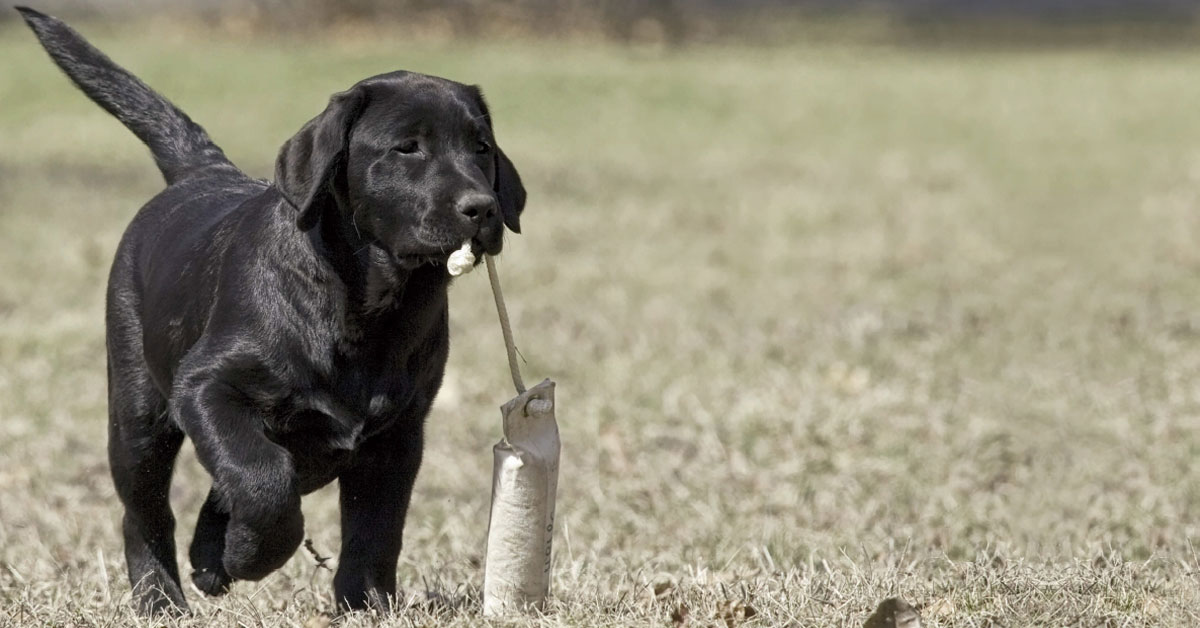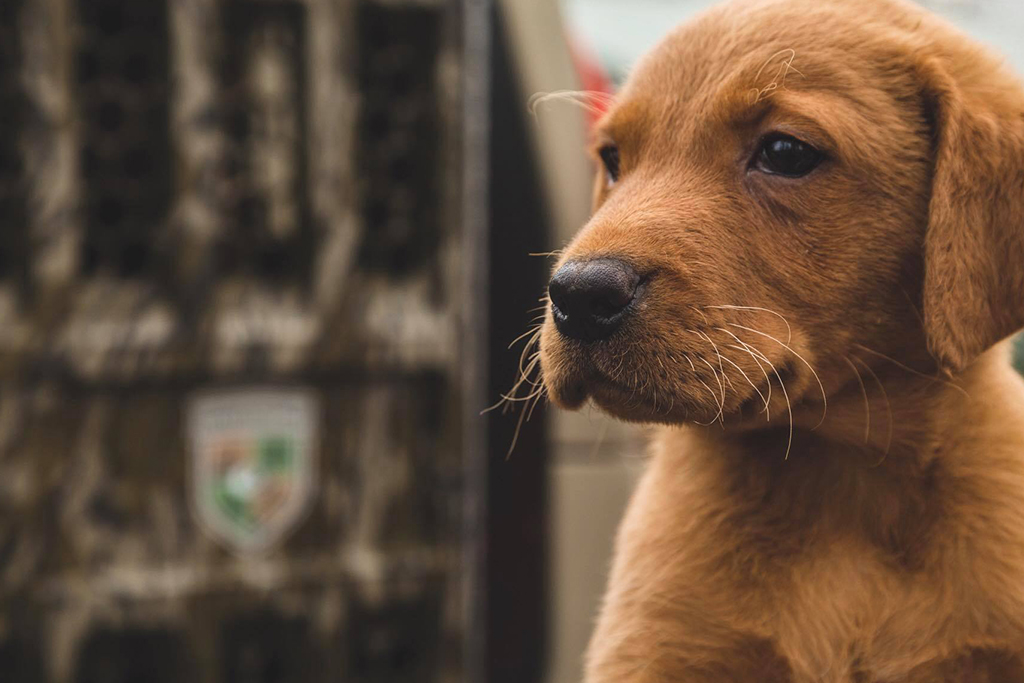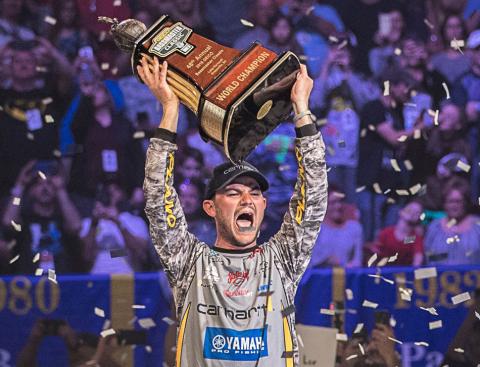Bill Gibson, Kennel Master of Mossy Oak GameKeeper Kennels

Once you have selected a litter and picked out your new puppy, an entirely new set of questions arise:
1. When do I begin training my puppy?
2. How should I start training the puppy?
3. What are the dos and don'ts of owning a new puppy?
My number one rule in beginning a puppy’s training is don’t train in habits that later have to be trained out or at best suppressed. The mistake I see most is the owner bypasses obedience and begins training by throwing dummy after dummy, letting the puppy go for the retrieve without any restraint, grabbing the dummy from the puppy’s mouth and then immediately throwing the dummy again and again, thereby repeating the same incorrect sequence of events.
The unintended consequence of repeating this sequence over and over is twofold; the puppy is actually being trained to be unsteady and is being encouraged to drop the dummy upon return. The end results are a total lack of steadiness at the line and a compromise of delivery to hand. Both are issues that must later be corrected with additional obedience training and conditioned hold training, along with poor focus. A Labrador should possess natural retrieving instincts and should require minimal prey drive development at this early stage of life.
By way of further explanation, I subscribe to the theory that just about everything that a puppy learns from birth to six months becomes so ingrained that it becomes a “conditioned habit,” that is a habit that can be suppressed for a period of time but can never be completely trained out, much less eliminated.
When I say this I think back many years ago to my dog Rocky. I watched as my wife sprayed him with the garden hose at a very young age. This spraying happened almost daily from the time he came home as a puppy until delivery to the trainer at six months of age. He loved it; he reveled in it and actually looked forward to his daily wild romp with the water hose.
About two weeks after the trainer got him he wanted to know what was wrong with my dog. It seems that they could not properly clean his kennel using the water hose without him going berserk and causing the kennel hands to get soaked. I told him about my wife and he said he would fix the problem and he did, sort of.
When the dog returned home after basic and advanced training and he saw my wife with the hose, he went berserk just as he had done before and we never could get him to stop again. The main point of this brief discussion being, think about what you are doing before engaging in the activity with your puppy. Don’t intentionally or unintentionally train in bad habits that you later have to try to train out or at best suppress. So, where do you begin?
Puppy Training (eight weeks to six months)
Puppy training should start the day you take puppy home. This early socialization and training forms the foundation for both intermediate and advanced gundog training. During this early training, the puppy should be exposed to all the basics including sit, stay, recall, and lead work walking at heel. The puppy should be taught not to jump on people, play-bite or any other annoying habits that should be discouraged. The puppy should learn to focus on you and the task at hand and to ignore his surroundings.
To produce a confident, happy, stress-free and obedient dog without emotional baggage, I expose the puppy to as many people as possible and to other dogs on a daily basis. The socialization process is vital to normal development and puppy’s future success as he develops into a working gundog. So when does training actually start? Training actually starts with crate training and sit training at feeding time.

Crate Command
Crate training is a relatively simple process that addresses several fundamental issues dealing with unwanted activity like chewing on household items and learning to go to the potty in the yard. Dogs won’t normally relieve themselves where they sleep, and this is why crate training is so important for a puppy kept in the house.
To ensure the puppy is properly trained to potty outside you must pay careful attention to him and learn to understand their body language and follow basic rules. You must also remember that when a puppy eats or drinks, bodily functions soon follow. So after feeding, immediately carry him outside and stay with him until he takes care of the business at hand. I use the command “hurry up” to encourage him to use the potty in the yard. The puppy will soon understand the concept and will alert you when he needs to go out.
The best way to prevent destruction of property is to crate the puppy when you are not actively engaged with him. How do you crate train a puppy? First and foremost you purchase a crate that is large enough to comfortably hold the puppy. The crate should be large enough so the puppy can easily stand and turn around.
Second, you teach the puppy to enter the kennel on the command “crate.” If the puppy is hesitant to enter, toss a treat to the back of the crate and repeat the command “crate.” Puppy will soon catch on and enter the crate when told to do so.
After being in the crate for a couple of hours take the puppy outside and let him play and use the potty. At night, let the puppy out just before you go to bed and then crate puppy until the next morning or until he becomes restless, indicating a need to again use the potty. After a few days your puppy should voluntarily enter the crate and then remain quiet for longer periods of time.
“Sit” Command at Feeding Time
I opine that feeding time presents an excellent opportunity to start training your puppy in a positive manner, so they recognize you as the “alpha dog” and to learn to sit in calm silence, focus on you and patiently wait for food.
When feeding your puppy (normally twice each day) you need to let him watch you while you prepare the food and offer it. It is important that you get your human scent on the puppy’s food so he fully understands the food is coming from you, the alpha dog. I do not recommend using feeding time as the appropriate time to introduce a puppy to gunfire or other loud noises, because I certainly don’t like loud noises while I am enjoying a meal.
Again, early “sit” training should begin at feeding time. After putting the puppy’s food in the bowl and getting your scent on the food, simply hold the feeding bowl high above the puppy’s head, which will force him to look up. Repeat the “sit” command while moving toward the puppy and as the angle of the food bowl increases relative to the puppy, he will automatically sit.
After sitting, have the puppy focus on you and maintain eye contact. Then set the food bowl down, but do not let him eat until you say, “OK.” As the puppy begins to sit in anticipation of getting food, continue to give the verbal command “sit,” gradually extend focus time, and after two or three feedings the puppy will sit as you enter the kennel with his food bowl and maintain eye contact.
Once the puppy sits, kneel down, set the food bowl down and prevent the puppy from eating until you give the verbal command, “OK.” If the puppy gets up from the sit position or loses focus before the “OK” command, simply lift the food bowl and start over. After two or three sessions your puppy will sit on command and remain in the sit position, focused on you until you allow them to eat by saying “OK.”
This is a good time to discuss the importance of proper eye contact or focus. Focus is important in the training process, because it is an indicator of the puppy’s learning abilities at any given time on any given day, especially his/her biddability (willingness to accept training).
If the puppy maintains eye contact he is capable of learning the task being taught. On the other hand, if puppy is distracted, looking around at objects, sniffing the ground, and/or looking away from you, he is not learning. The puppy is simply going through the motions while in the avoidance mode. How do you begin and maintain eye contact with your dog? Pre-training at feeding time is the beginning, and it continues throughout training.






























